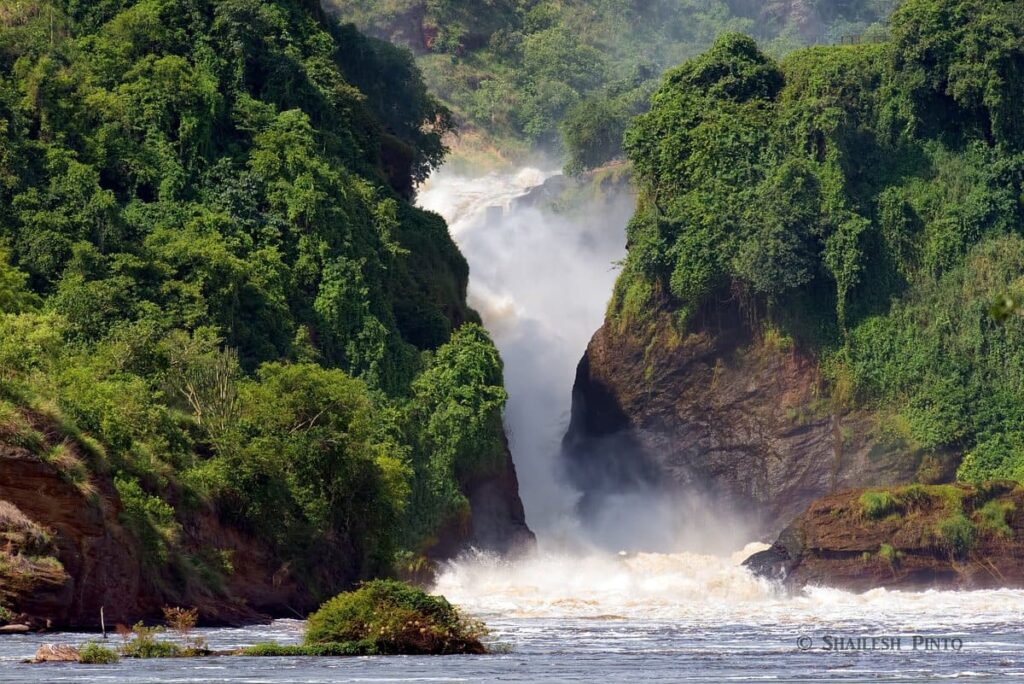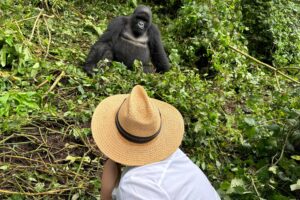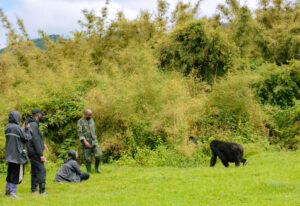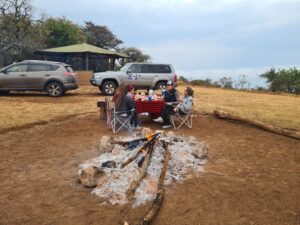Welcome to Murchison Falls National Park
Murchison Falls National Park sits on the shore of Lake Albert, in northwest Uganda. It’s known for Murchison Falls, where the Victoria Nile River surges through a narrow gap over a massive drop. Park wildlife includes elephants and hippos, and there are chimpanzees in the Kaniyo Pabidi mahogany forest. The Lake Albert Delta is home to rare shoebill storks. There are game fish in the cascades of Karuma Falls.
THE BIRDS AND ANIMALS IN MURCHISON FALLS NATIONAL PARK
Large mammals: The Park is comprised of woodland, wetland, savannah as well as tropical forests that are well known to be a habitant for over 76 mammal species and over 450 different bird species. Among the big mammals in the park include the hippo, Rothschild’s giraffe, warthog, cape buffalo, Uganda kob, hartebeest and elephants.
Birds: With over 450 bird species, the Nile corridor of the Murchison has a big array of water birds such as rare shoebill stork other popular species include: the Goliath Heron, African Quail-Finch, the elegant Grey Crowned Cranes, Blue-headed Coucal, White-browed Sparrow Weaver, Swamp Flycatcher, Red-throated Bee-eater, Squacco Heron, Silver bird, African Jacana, Piapiac, Sandpipers, Eastern Grey Plantain-eater, Denham’s Bustard, Weaver Birds, Abyssinian Ground-Hornbill, Malachite Kingfishers and the Black-billed Barbet among several others
Primates: in addition there are various primates found in this park among which are over 800 chimpanzees, olive baboons, black & white colobus monkeys, the red tailed monkeys and many others found in Kaniyo Pabidi as well as the Budongo forest.
Attractions at Murchison Falls National Park
The Attractions at Murchison Falls National Park are quite many and fact is are all beautiful. The list below highlights some of them.
Murchison Falls
Murchison Falls is characterized by eternal war between rock and water. The waters violently compress through a narrow gorge, spraying misty droplets along their wake over a 50m radius. This creates a permanent rainbow over the battlefield and causes a continuous roar. From Baker Point on the southern side, you can also view the Nile splitting into the smaller Uhuru Falls, created in 1962 when the river burst its banks.
River Nile
A boat ride along the Nile to the foot of Murchison Falls is a rewarding experience for nature lovers, as the northern bank teems with a variety of mammals, birds and reptiles. Guided nature walks along both the north and south banks are another refreshing activity, and sport fishing is also possible here. Rafting will be available starting in 2012.
Nile-Lake Albert Delta
This wide, calm stretch of water, where the tranquil Victoria Nile flows into Lake Albert, is a key area for bird watchers. Its papyrus-lined banks are bursting with birdlife, including Goliath Herons, Great Egrets, and African Fish Eagles. The most sought-after species here is the rare Shoebill.
Buligi Game Tracks
The Buligi game tracks, stretching between the Victoria and Albert Niles, are the Murchison Falls National Park’s most popular safari destination. At around 120-170km in length, they pass through open savannah grassland, woodland, acacia and riverine vegetation. Most of the park’s game can be viewed here, especially during early morning and early evening tours.
Paraa
Paraa is one of the top areas of interest in Murchison falls. The word Paraa comes from the local Luo language; meaning “home of hippos” and this is where all the park’s access roads converge as the northern and southern banks are connected by a passenger ferry and a number of hotels and safari lodges are located nearby. There is also, a museum and gift shop which can be found on the northern bank, and this is where most of the game drives, launch trips and nature walks take place.
Karuma Falls
Karuma falls are found in the northeastern side of Murchison Falls National Park in the Chobe region. It is a great location for sport fishing in Murchison Falls. These thundering waterfalls on the Victoria Nile are made up of a series of natural rock formations which cause the waters to ripple and give them a white foam-like appearance to the amusement and excitement of the viewer! The best accommodation in this area is Chobe Safari Lodge.
Kaniyo Pabidi Forest
Kaniyo Pabid Forest is located in the south of Murchison falls conservation are and it this forest ecosystem harbors a habituated chimpanzee group which can be tracked for those looking for Chimpanzee tracking in Murchison Falls National Park. It is also home to black-and-white colobus and blue monkeys and olive baboons. Other wildlife that visits include Elephants, buffalos, lions and leopards. A great number of forest birds can be ticked off the list here, including the chocolate-backed kingfisher, white-thighed hornbill and Puvel’s illadopsis which cannot be found anywhere else in East Africa.
Kaniyo Pabidi has a campsite, cottage accommodation, forest walks and excellent bird watching.
Rabongo Forest
Surrounded by savanna and covering just 4km2, Rabongo Forest is considered a birders’ paradise because of the endangered species found here. Rabongo is ideal for educational tours as it provides opportunities to identify animals, birds, medicinal plants and trees. For relaxation, visitors can camp and enjoy picnics by the Wairingo River.
Budongo Forest
Budongo Forest is one of the key areas that lies southwest of Murchison Falls Conservation Area bordering Murchison falls with a link to the community, which is contiguous with the Kaniyo Pabidi Forest known for chimpanzee tracking. The forest – Bundongo is overwhelmingly biodiverse with 24 species of mammals, over 360 birds, 289 butterflies and 465 plants. All the forest’s tree species are on display along the “Royal Mile”, a beautiful stretch of road highly regarded for its bird watching. Budongo is also known for its primate population, which includes around 800 chimpanzees. Forest walks are possible at Busingiro Ecotourism Site on the Masindi-Bugungu route to Murchison Falls National Park.
TOP OF THE MURCHISON FALLS VIEW
The most spectacular view of the waterfall is on the ‘top of the Nile’ where the sight & sound of the Nile crashing through a small chasm make a memorable assault on your senses. The site can be reached either by car or on a 30 minutes climb, from the boat at the bottom of the falls.




